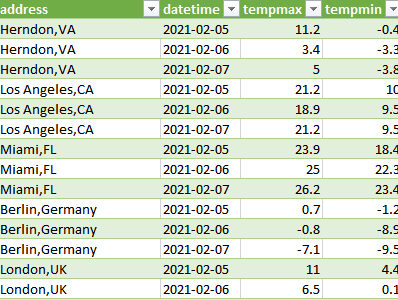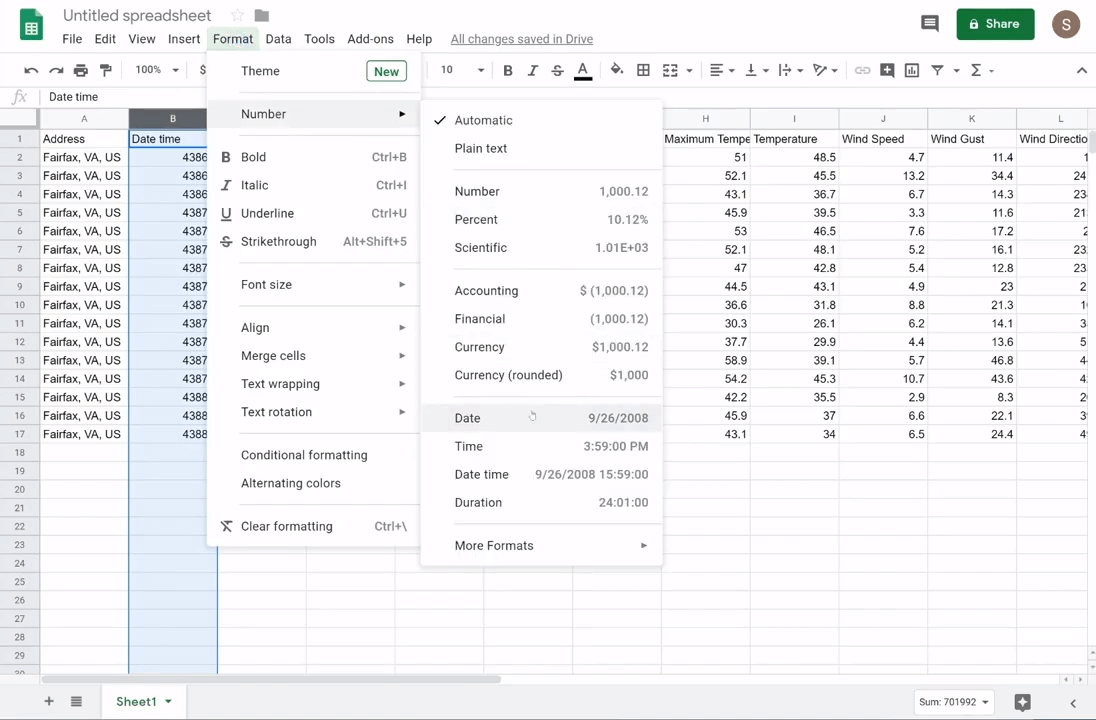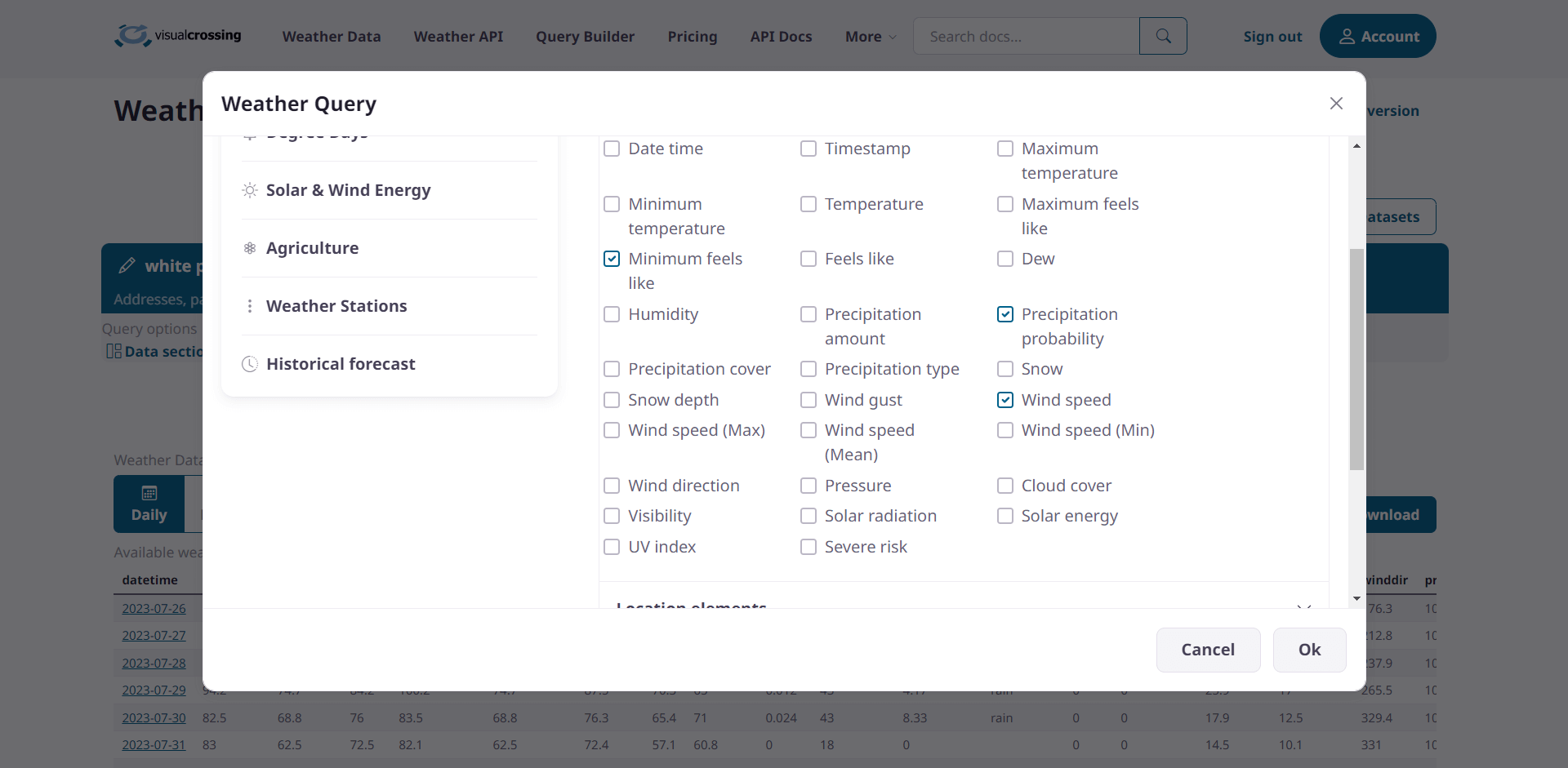Importing data from a JSON Weather API into Microsoft Excel using Power Query
This article shows how to import data into Microsoft Excel using Power Query from a RESTful Weather API. This API returns JSON-based data. We are also going to explain how to create a loop within our script so that we can call the API multiple times for multiple locations and create a combined result table …
Continue reading “Importing data from a JSON Weather API into Microsoft Excel using Power Query”
How To Load Weather Data into Google Sheets using JSON
While it is very easy to load weather data into Google Sheets via CSV, loading JSON can seem a bit more challenging. However, for the savvy Google Sheets user, loading JSON weather data from the Visual Crossing Timeline Weather API is almost as easy as using CSV and offers additional benefit and functionality that CSV …
Continue reading “How To Load Weather Data into Google Sheets using JSON”
Weather API JSON result structure
This document applies to the /forecast and /history endpoints. If you are using the Timeline Weather API (/timeline), you can find the JSON structure documented on the Time Weather API documentation page. This article describes the JSON structure returned from the weather API. This same basic structure is returned for both weather forecast, weather history …
How to Build an Artificially Intelligent Chatbot using the Microsoft Bot Framework and the Visual Crossing Weather API
This article will describe how to integrate the Microsoft Bot Framework with a weather API that enables the development of smart, responsive bots that can deliver real-time weather updates. This guide will take you through the process of setting up your bot using conversational language understanding (CLU), integrating it with a weather API, and …
How can I load weather forecast data into Google Sheets?
Tracking future weather conditions is key to create workflows and stay informed for weather-centric workplaces, helping with planning activities in a cost effective yet powerful way. Timely API calls will give you weather forecast details much faster and more efficiently than ever before, providing the granular data you need to make informed decisions. When creating …
Continue reading “How can I load weather forecast data into Google Sheets?”
How to Build a Weather App
From sourcing accurate data to implementing user-friendly interfaces, discover step-by-step instructions and best practices to build a weather app.
How to use Python and Pandas to join historical weather data to road accident data
I am currently investigating the relationship between weather conditions and accidents by using a dataset of road accidents in Fairfax County, Virginia obtained from the Virginia Department of Motor Vehicles. The first step to perform the analysis is to combine the accident data with the historical weather conditions. In this article, we will discuss how …
Adding and Removing Elements from your Weather Query
The ability to add or remove elements from weather data or columns is incredibly useful in various scenarios. By using this capability, researchers, meteorologists, and data analysts can streamline their data sets for optimum performance and focus solely on the relevant information for their specific research or analysis. Removing unnecessary weather elements that do not …
Continue reading “Adding and Removing Elements from your Weather Query”
Timeline Weather API
The Timeline Weather API is the simplest and most powerful way to retrieve weather data. You can request data over any time window including windows that span the past, present, and future. The API will take care of the combining historical observations, current 15-day forecasts, and statistical weather forecasts to create a single, consolidated dataset …
How to load weather data in PHP
If you are creating web pages or other applications using PHP, then you may find the need to include weather data directly on your page. When incorporating weather data, you can use a pre-built widget or maybe even a WordPress plugin, however if you want full control over how the data is retrieved and displayed, …






